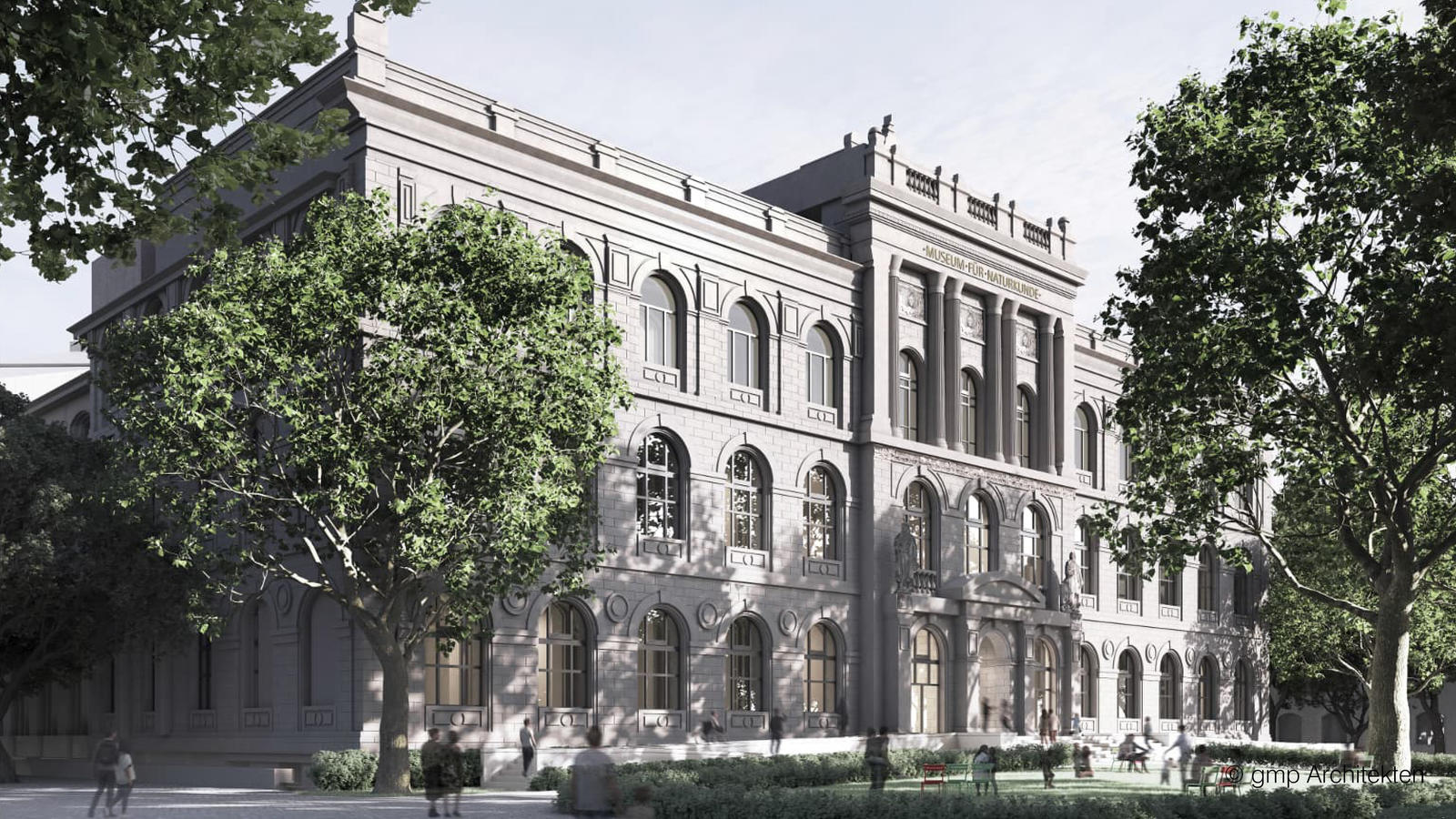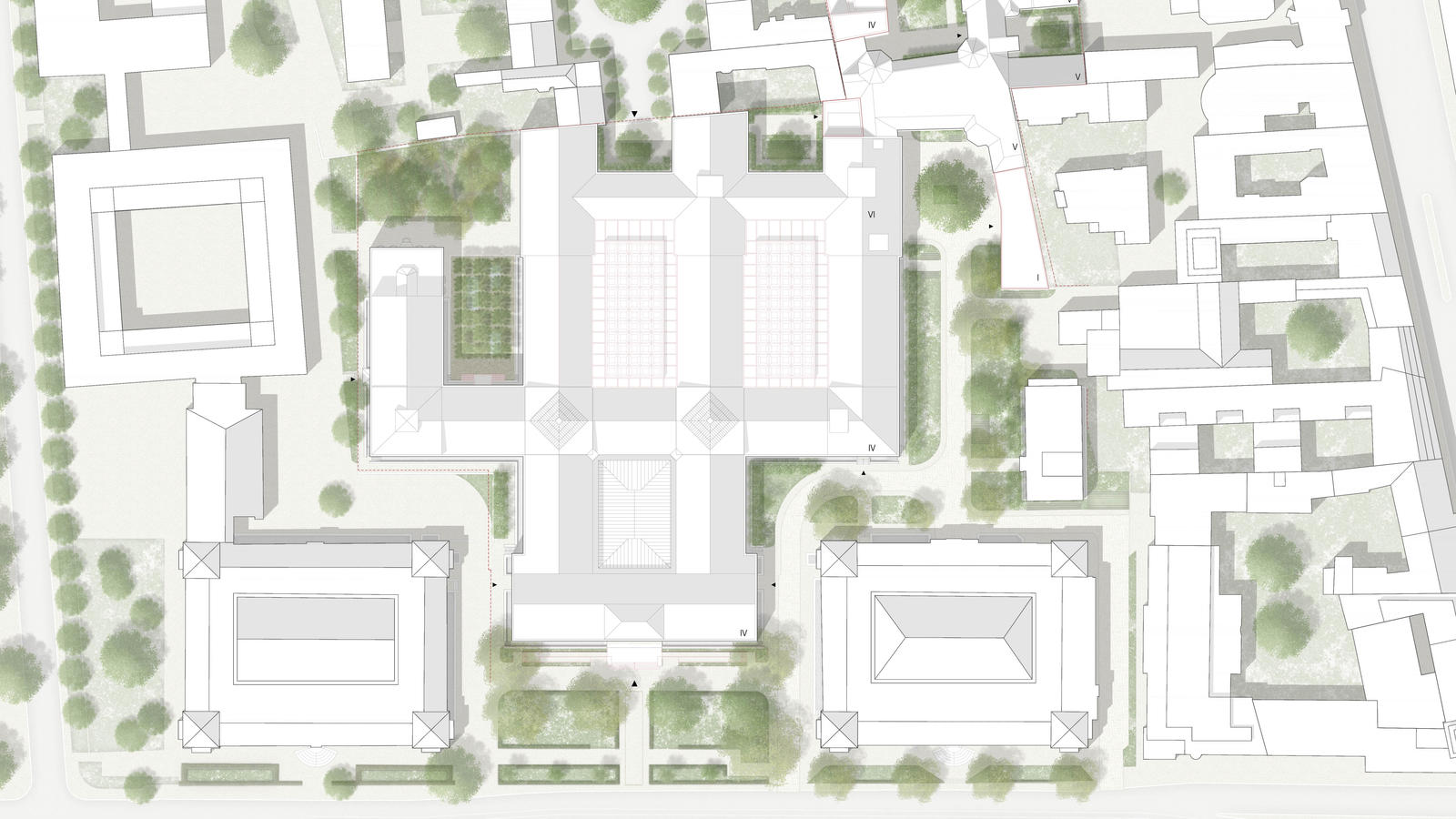2023
The Museum für Naturkunde in Berlin is to be further developed into an open and integrated research museum in the coming years. The aim was to preserve the listed ensemble and expand it with new space for exhibitions, collections and research. Spaces for knowledge transfer are to be created, with an inclusive and barrier-free visitor infrastructure that will make it possible for everyone to have access. The main entrance is formed by the green foyer, which creates an inviting atmosphere with lawn fields and columned beech trees. Barrier-free access to the museum will be made possible here. The current Dino Hall will precede the entrance as a welcome hall, creating an impressive and lasting first impression on visitors. The visitors are then led into covered courtyards with new exhibition areas with light roofs. From here, a barrier-free and attractive tour of all exhibition and special exhibition areas can be taken.
The various outdoor areas around the museum will be designed for different functions. A museum grove will be created for exhibition areas, events and as a picnic area. For the younger guests, a play forest is being created for romping and learning through play. These active possibilities are continued in the Werkhof, which now offers a communicative meeting place and outdoor working stations for young and old. With a science café and institute gardens, scientific exchange between staff can also take place here. The quiet garden, the campus magistrale and the garden courtyard invite you to relax and linger. Here you can let the knowledge you have seen and experienced take effect on you in a climate that suits the institute, between planted areas with perennials, hydrangeas, bedding roses, lavender and other plants. Accents of hornbeam and water run across the entire outdoor area, giving the whole concept a unified image of the outdoor facilities. The result is a place that builds a bridge between science, museum and society with openness, transparency and knowledge transfer.
Die verschiedenen Außenflächen um das Museum werden zu unterschiedlichen Funktionen gestaltet. So entsteht ein Museumshain für Ausstellungsflächen, Veranstaltungen und als Picknickarea. Für die kleinen Gäste entsteht ein Spielwäldchen zum Toben und spielerischen Lernen. Diese aktiven Möglichkeiten werden im Werkhof fortgeführt, der nun für groß und klein einen kommunikativen Treffpunkt mit Outdoorworkingstations bietet. Mit einem Wissenschaftscafé und Institutsgärten kann hier auch ein wissenschaftlicher Austausch zwischen Mitarbeitern stattfinden. Zum Entspannen und Verweilen laden der Ruhegarten, die Campusmagistrale und der Gartenhof ein. Hier kann man zwischen angelegten Flächen mit Stauden, Hortensien, Beet Rosen, Lavendel und anderen Pflanzen, dass gesehene und erfahrene Wissen in einem zum Institut passenden Klima auf sich wirken lassen. Über die gesamten Außenflächen ziehen sich Akzente aus Hainbuchen und Wasser, die dem ganzen Konzept ein einheitliches Bild der Außenanlagen geben. Es entsteht ein Ort der mit Offenheit, Transparenz und Wissenstransfer eine Brücke zwischen Wissenschaft, Museum und Gesellschaft bildet.



